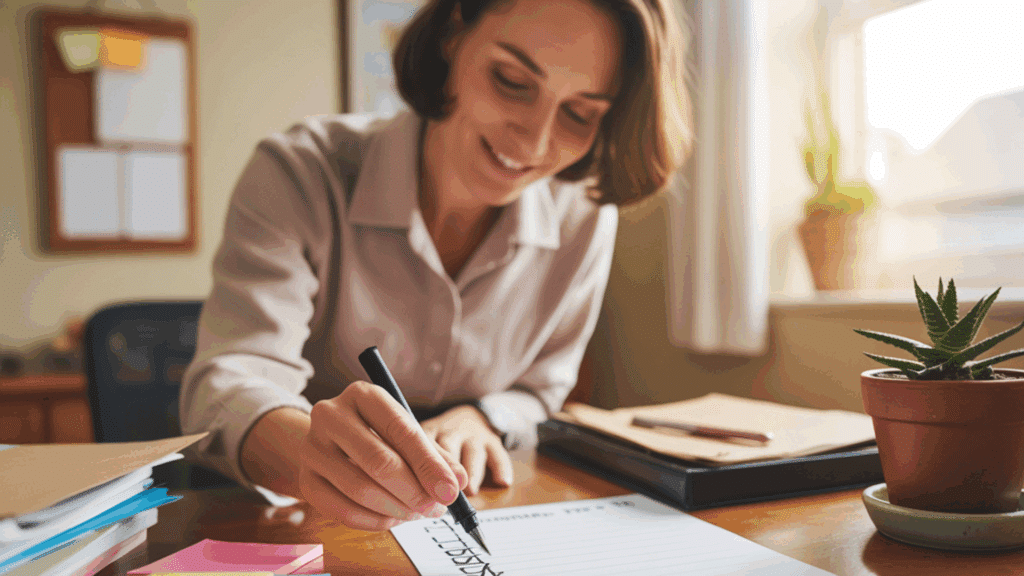Teaching can drain even the most dedicated educators. Long hours, countless papers to grade, and the constant energy needed for students takes a toll.
Many teachers spend this time catching up on work instead of refreshing themselves. This often leads to burnout and stress when classes resume.
This post will show you how to make the most of your break with simple preparation tips, fun activities that won’t strain your pocket, and smart ways to ease back into teaching afterward.
Follow these suggestions for a truly restful break!
The Importance of Spring Break for the Teachers’ Well-being

Teachers need breaks to recharge their mental batteries. The daily work of teaching involves constant decision-making and emotional labor that wears down even the most committed educators.
Spring break teachers who truly rest see these benefits:
- Better mental health and lower stress levels
- Increased patience when handling classroom issues
- Fresh thinking for lesson plans and teaching methods
- Reduced risk of burnout as the school year continues
- Improved physical health from proper rest
Research shows that teachers who completely step away from work during breaks return with more stamina and joy for teaching. This isn’t just nice – it’s needed.
Spring Break Preparation Tips for Teachers

Teachers often spend more time planning for their students than for themselves. This year, try these simple steps to set yourself up for a truly refreshing time off:
1. Finish grading before break starts
This might mean a few late nights, but walking away with an empty inbox creates mental freedom. When papers aren’t hanging over your head, you can fully relax without that nagging feeling of work waiting for you.
2. Create an out-of-office message
Let students, parents, and colleagues know you won’t be checking emails. Set clear boundaries about when you’ll return to messages, and stick to this plan. This small step helps protect your time and sets proper expectations.
3. Plan at least one fun activity
Schedule something enjoyable – whether it’s coffee with friends, a day trip, or simply reading a non-teaching book. Having something to look forward to makes the break feel special and intentional.
4. Clean your classroom
Spend 30 minutes tidying up before you leave. Coming back to a clean desk and organized materials will make your return much less stressful. This small effort pays off in peace of mind.
5. Set a work-free zone
Decide on days (or even the entire break) when you won’t think about teaching. Spring break, teachers deserve complete mental rest. Mark these days on your calendar and honor them like any important appointment.
With thoughtful preparation, your break can be both relaxing and meaningful. Remember that taking care of yourself isn’t selfish – it’s necessary for sustainable teaching and the energy your students deserve when you return.
Celebrating Spring Break: Teacher Traditions and Activities

Spring break teachers often develop personal rituals that help them fully disconnect from school demands. These tried-and-true activities help educators rest their minds and replenish energy reserves:
1. Home Reading Retreat
Create a cozy reading nook at home and work through that stack of books you’ve been meaning to read. Give yourself permission to read purely for pleasure without thinking about classroom applications.
- What you’ll need: Comfortable pillows, blankets, books, and your favorite warm drink.
- Relaxation tips: Turn off notifications and set a timer if you tend to feel guilty about “doing nothing.”
2. Nature Walk Journal
Take daily walks in a local park or nature area. Bring a small notebook to jot down observations or sketch what you see. This gets you outside and awakens your senses.
- What you’ll need: Walking shoes, a small notebook, and a pen or pencil.
- Relaxation tips: Leave your phone in your pocket and focus only on what you can see, hear, and smell.
3. Bread Baking Day
The rhythmic process of kneading dough can be deeply calming. Plus, you’ll have fresh bread to enjoy! Start with a simple recipe if you’re a beginner.
- What you’ll need: Flour, yeast, salt, water, and basic kitchen tools.
- Relaxation tips: Focus on the feeling of the dough in your hands rather than rushing to the result.
4. Photo Walk Challenge
Choose a different theme each day (colors, textures, shapes) and take photos that match while walking around your neighborhood or a new area.
- What you’ll need: A camera or smartphone and comfortable walking shoes.
- Relaxation tips: Look for beauty in ordinary things; this builds a habit of noticing small joys.
5. Backyard Birdwatching
Set up a simple bird feeding station and keep track of the visitors. This is perfect for slow mornings with coffee before the day begins.
- What you’ll need: Bird feeder, seed, and a bird identification guide or app.
- Relaxation tips: Sit quietly and wait; the patience required helps calm an active teacher’s mind.
6. Movie Marathon Day
Pick a theme or director and watch several films back-to-back. Allow yourself to fully step into different worlds without feeling rushed.
- What you’ll need: Streaming service subscription or DVDs, snacks, and comfy clothes.
- Relaxation tips: Turn off your teacher analysis mode and watch purely for enjoyment.
7. Local Coffee Shop Tour
Visit a different local coffee shop each day. Bring a book or journal and spend an hour sipping slowly while people-watching or reading.
- What you’ll need: A list of coffee shops to try and a book or journal.
- Relaxation tips: Put your phone away and enjoy being in a space where no one needs anything from you.
8. Handwritten Letters Project
Write actual letters to friends, family, or even former students who made an impact on you. The slow, thoughtful process is both meaningful and calming.
- What you’ll need: Stationery, stamps, addresses, and a good pen.
- Relaxation tips: Focus on expressing gratitude in each letter to boost your own mood.
9. Simple Watercolor Session
Try basic watercolor painting, even if you’ve never painted before. The flowing colors can be very calming and require no artistic skill to enjoy.
- What you’ll need: Watercolor paint set, paper, brushes, and a cup of water.
- Relaxation tips: Focus on the colors mixing rather than creating a “good” painting.
10. Digital Detox Day
Commit to a full day without screens. Plan ahead with books, puzzles, or outdoor activities to keep yourself engaged without technology.
- What you’ll need: Books, board games, puzzles, or outdoor equipment.
- Relaxation tips: Tell friends you’ll be offline so you don’t worry about missing messages.
11. Home Spa Afternoon
Create a spa-like experience at home with simple items. The rituals of self-care can help you reset your mind and body.
- What you’ll need: Bath salts or bubble bath, face mask, candles, and soft music.
- Relaxation tips: Set a timer for at least one hour of uninterrupted quiet time.
12. Cookbook Challenge
Pick a cookbook and try making something new each day of your break. This gives your day structure without work pressure.
- What you’ll need: A cookbook with recipes that interest you and basic cooking supplies.
- Relaxation tips: Focus on the process rather than perfect results; cooking is about the making.
13. Garden Starter Project
Plant seeds for herbs or flowers indoors. Caring for growing things can be very calming and gives you something to look forward to.
- What you’ll need: Seeds, small pots, soil, and a sunny windowsill.
- Relaxation tips: Use the daily watering ritual as a mindfulness practice.
14. Puzzle Table Setup
Start a jigsaw puzzle that can stay out all week. Stop by and add pieces whenever you need a mental break from other activities.
- What you’ll need: A jigsaw puzzle and a table or board where it can remain undisturbed.
- Relaxation tips: Don’t rush; the act of searching for pieces calms an overactive mind.
15. Morning Pages Practice
Write three pages of stream-of-consciousness writing each morning. This clears mental clutter and often leads to insights about what you truly need.
- What you’ll need: A notebook and pen dedicated to this practice.
- Relaxation tips: Write whatever comes to mind without editing or judging yourself.
16. Local Museum Visit
Many museums have free or discounted weekday admission. Visit during less crowded times for a peaceful cultural experience.
- What you’ll need: Information about local museums and their hours.
- Relaxation tips: Focus on just one room or exhibit rather than trying to see everything.
17. Home Concert Night
Create a playlist of your favorite music and have an at-home concert experience. Dance, sing, or just close your eyes and listen deeply.
- What you’ll need: A music device, good speakers, and a comfortable space.
- Relaxation tips: Choose music you love but rarely make time to fully appreciate.
18. Stargazing Evening
Spend an evening looking at the stars. The vastness of the sky helps put daily stresses into perspective.
- What you’ll need: A blanket, warm clothes, and a star identification app.
- Relaxation tips: Focus on your breathing while looking up at the immensity of the night sky.
19. Recipe Development
Try creating your own recipe based on flavors you enjoy. The creative process is different from following teaching plans and can be freeing.
- What you’ll need: Basic cooking ingredients and tools.
- Relaxation tips: Embrace the experimental nature; not every attempt will be perfect.
20. Local History Walk
Research historical sites in your area and take a self-guided walking tour. Learning for pure interest feels different from professional development.
- What you’ll need: Information about local history and comfortable walking shoes.
- Relaxation tips: Take your time and imagine the stories behind the places you visit.
21. Craft Supply Organization
Sort through craft supplies you already own and set up a project using only what you have. This combines practical organization with creativity.
- What you’ll need: Your existing craft supplies and storage containers.
- Relaxation tips: Focus on the satisfaction of creating order and rediscovering forgotten items.
22. Board Game Night
Invite friends over for a board game night. Social time with no shop talk can be refreshing and reminds you of your identity beyond teaching.
- What you’ll need: Board games, snacks, and friends who make you laugh.
- Relaxation tips: Choose games that are fun rather than highly competitive.
23. Plant Care Day
Spend time caring for your houseplants. Repot if needed, dust leaves, and arrange them in a pleasing way. Plant care is slow and grounding.
- What you’ll need: Houseplants, fresh soil, and larger pots if needed.
- Relaxation tips: Notice the unique qualities of each plant as you care for it.
24. Family Recipe Project
Make a traditional family recipe and document the process. This connects you to your personal history and creates something to share.
- What you’ll need: Family recipe, ingredients, and a way to record (photos or writing).
- Relaxation tips: Enjoy the sensory memories that cooking family foods often brings up.
25. Audio Book Walk
Combine light exercise with storytelling by listening to an audiobook while walking. This makes both activities more enjoyable.
- What you’ll need: Audiobook, headphones, and comfortable walking shoes.
- Relaxation tips: Choose fiction that transports you away from work-related thoughts.
When spring break teachers return to their classrooms after a meaningful time away, the benefits extend to their students as well – they pay dividends in classroom patience and teaching creativity.
Preparing for the Return After Spring Break

The shift from break mode back to teaching can feel like a shock unless you plan ahead. Follow the suggestions below to make the transition smooth:
- Schedule a buffer day: Plan to return home at least one day before school starts again. This gives you time to mentally switch gears without feeling rushed or stressed on your first day back.
- Review your plans: Take a short time to look over what’s coming up in your curriculum. A 30-minute review helps you feel ready without spending your whole break working.
- Prepare a welcome-back activity: Start with something that eases students back into learning rather than jumping into heavy content. This helps both you and your class adjust to being back.
- Set up your classroom the evening before: Many spring break teachers find that coming in the afternoon before school starts helps reduce first-day-back anxiety. Just 15 minutes can make a difference.
- Lower your expectations: The first day back might not be perfect, and that’s okay. Students need time to readjust, too, so plan accordingly with more structured activities.
A smooth return sets the tone for the rest of your teaching year, making these small steps worth your time.
Summing It Up
Spring break, teachers deserve true rest, not just a change of workplace.
By planning ahead, setting boundaries, and choosing activities that bring joy, you can turn your break into a real source of renewal.
What are your favorite spring break activities? Share your traditions in the comments below! Your ideas might help another teacher find the perfect way to unwind.




